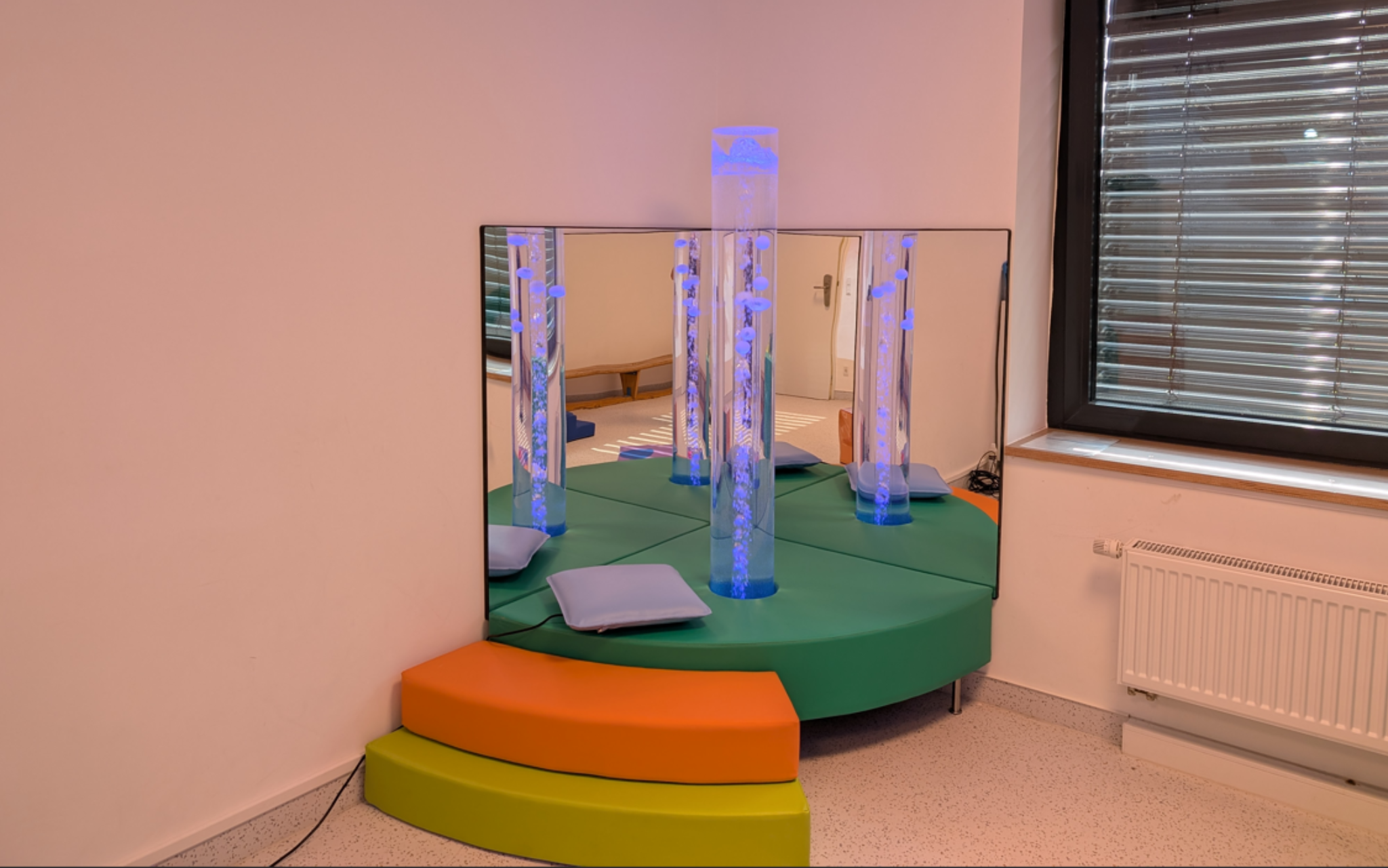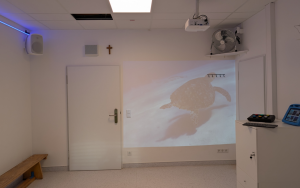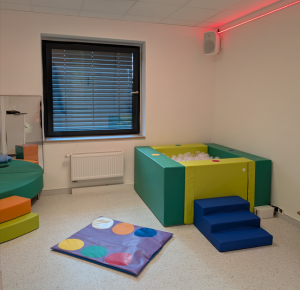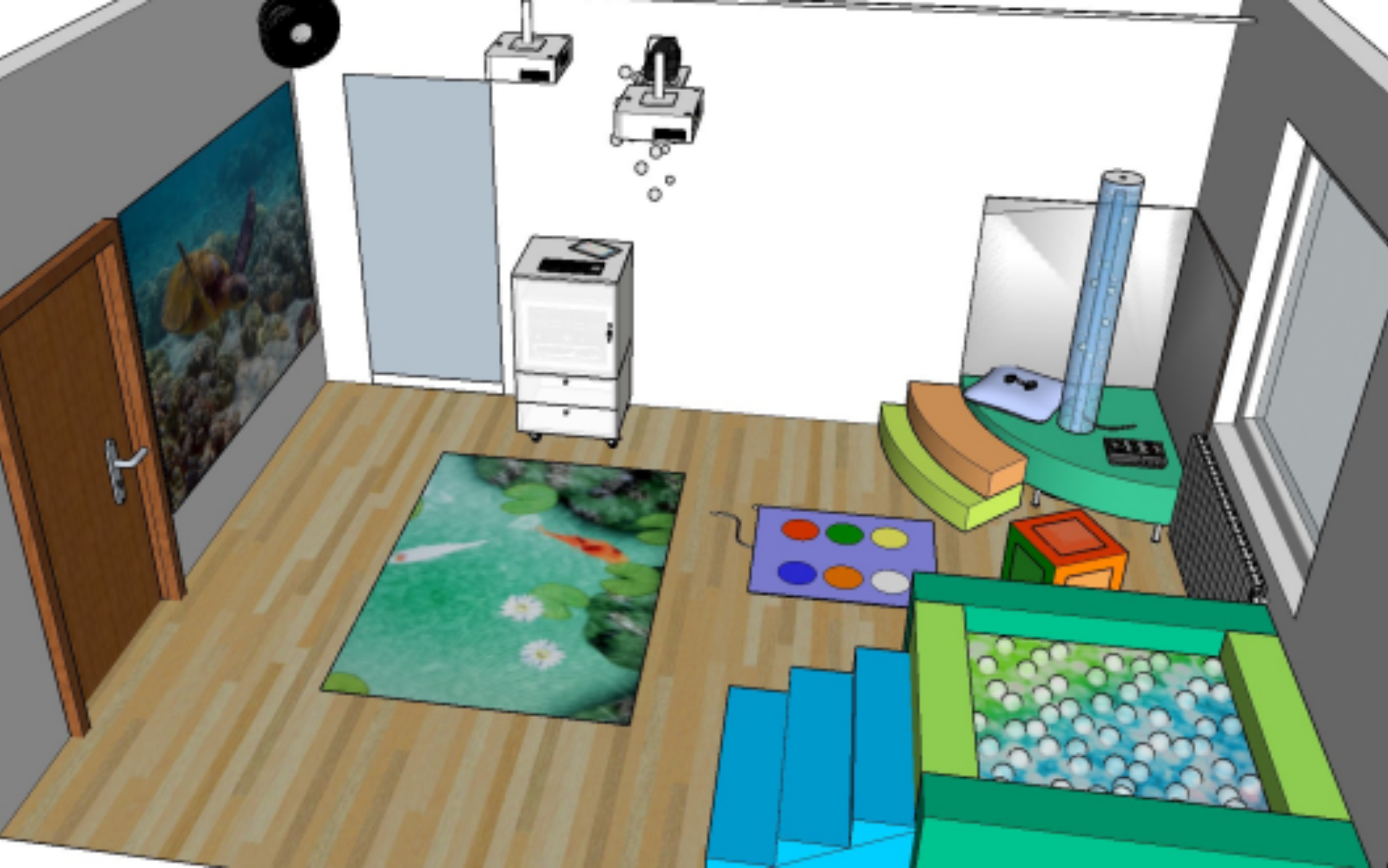Bibiana Escribano
Occupational Therapist. Specialist in pshycomotricity, music therapy and sensory integration.
Read more postsMultisensory environments are reshaping the way schools think about education. Instead of limiting learning to books, desks, and blackboards, they open the classroom to experiences where knowledge is felt, seen, and heard — making it more tangible, engaging, and inclusive.
At the Caritas-Schule Mariannhill, a special education school in Würzburg (Germany), this vision has recently become a reality. Together with our partner LogBUK, they created two multisensory rooms that open new pathways for teaching, learning, and development.
A multisensory environment is designed to stimulate the senses in a controlled and meaningful way — using light, sound, vibration, projections, textures, and even scent to create an atmosphere that adapts to each person’s needs. These spaces can help regulate the nervous system, activate motivation, support learning and communication, facilitate rehabilitation, or simply offer calm, comfort, and joy.

At Mariannhill, these rooms are not an occasional escape, but part of everyday school life. Teachers use them to prepare students for new topics, to give them space to regulate when emotions run high, or to transform abstract content into something they can truly experience. A lesson about nature, for example, can turn into a multisensory journey: with the patter of rain, the gentle sway of leaves in the wind, and the shifting colours of a sunset projected across the walls. For many children, this makes the difference between memorising and understanding, between listening and truly participating.
For the school, these spaces are living classrooms — places where learning becomes tangible, emotions find balance, and every child can discover their own way of connecting with the world.
The first room is a relaxation room: a low-stimulus environment with soft lights, calming sounds, comfortable furniture, and cozy textures. This protected atmosphere invites students to slow down, connect with their bodies, and find inner calm. It helps them strengthen body awareness, reduce stress, and achieve emotional balance — essential skills for both learning and life.

Here, projection scenes, a vibroacoustic cushion, a bubble tube, and the shimmering strands of the Luminea fiber optics and the Luminea Fountain work together to create a soothing, interactive atmosphere. The fibers and the bubble tube, in particular, provide a captivating visual and tactile stimulus: their changing colours capture attention and support focus, while touch helps students become more aware of different parts of their body. Together, they become powerful tools for cause-and-effect learning, colour recognition, communication, and sensory exploration — all within a calming environment that can gently embrace the children.
The second is an activation room, vibrant and full of color, projections, dynamic sound and other effects. Here, students can explore creatively and autonomously, using all their senses. Seasonal themes and special moments come to life — like the freshness of summer rain, the rustle of autumn leaves, or the sparkle of fireworks projected onto the walls.

Every detail is designed to engage: from a vibrating ball pool to light installations, visual projections, and even soap bubbles that turn each visit into an adventure. The room is also fully interactive — students can change colors and effects with a six-button controller, a giant Sensory Cube, or a colored mat (Sensory Step), making each activity fun and intuitive. At the same time, teachers can use the Luminea App on a tablet to guide the experience, access dozens of built-in activities, or even design new ones. This combination gives professionals a powerful tool to adapt sessions, while keeping the room playful and empowering for the children.
These spaces are not just visually appealing; they are meaningful environments that give teachers and therapists practical ways to adapt activities to each student’s needs, support learning processes, and encourage emotional and sensory development. They make individualized education tangible, helping to:
In addition, the rooms are woven into the school’s daily life. Informative posters and creatively designed doors make them recognizable from the outside — sparking curiosity, preparing students for what they will find, and ensuring that families, staff, and visitors see them as integral parts of the school, not separate “special” spaces.

Education is not only about knowledge, but also about how children feel while learning. Multisensory rooms give students the tools to regulate their nervous system, feel safe, and explore the world in ways that traditional classrooms cannot offer. When education takes place in a multisensory space, children don’t just learn more — they enjoy the process, feel supported, and grow in environments that truly care.
For children with diverse abilities, they provide alternative ways to process information and express themselves. For teachers, they become a source of innovation and creativity in daily practice. And for schools, they symbolize a commitment to inclusion, care, and holistic development.
👉 This project at Mariannhill was made possible thanks to collaboration between the school, our partner LogBUK, and the Qinera team. It reflects a growing movement across Europe: schools choosing to design learning spaces that are not only functional, but also inspiring, therapeutic, and deeply human.
If you want to learn more about the benefits of Multisensory Environments or see how you could adapt it to your space, therapeutic goals, and users, you can send an email to hello@qinera.com.
Occupational Therapist. Specialist in pshycomotricity, music therapy and sensory integration.
Read more posts